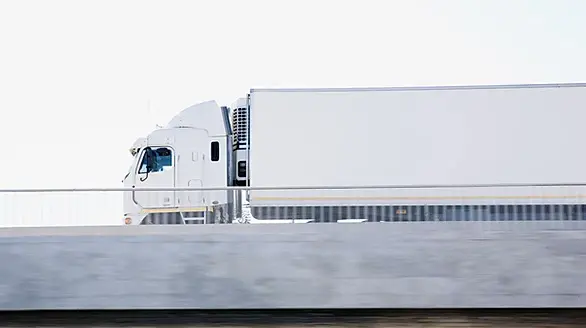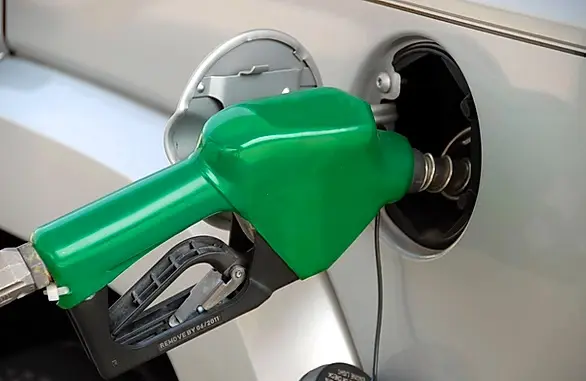
3 KPIs to help benchmark your fleet vehicle telematics data
The real-time data generated from telematics technology can be used to monitor every aspect of your fleet vehicle and driver performance. These parameters include:
- Vehicle operation, including travelling speeds, distances journeyed and the frequency of stops.
- The condition of assets, including servicing history and average fuel consumption.
- Human factors include hours drivers have worked, breaks taken and communications with fleet managers.
After logging and processing this data, operators can then use it to drive essential changes in their business. These changes can reduce vehicle wear-and-tear and fuel costs, lower time spent on-road and improve driver safety.

Telematics can be used to improve driver safety.
Tracking the positives of telematics
These three benefits are decisive when considering how to benchmark the value of telematics data. Statistics are meaningless unless you can derive actionable goals from them, which is why KPIs are crucial to interpreting operational information.
All performance metrics should link to your organisation’s strategic objectives and core mission statement. With these broad-level targets, fleet management can divide the workload into goals determined as fulfilled or on target by KPIs. In most fleet businesses, this can be broken down into safety, efficiency and compliance indicators.
1) Safety KPIs
If a business aims to drop the rate of fleet vehicle collisions, tracking this through events per a set distance is a good way of breaking this down. For example, if a business aims to reduce its collision rate by 10 per cent, it can apply this calculation:
If the current collision rate is one per 100,000 kilometres, reducing this by 10 per cent works out at 0.9 per 100,000 kilometres (one divided by 100 multiplied by 10). So the acceptable rate moves up to one collision per 111,000 kilometres.
Other KPIs for tracking safety in a fleet business include:
- The number of speeding events per month.
- The number of events involving mobile phone use or fatigue.
- Percentage of repeat offenders over a set period.
Using these figures, fleet managers can find and track the ways safety is measured, applying changes that improve the safety of drivers and other road users.

Speeding is a crucial metric for analysing driver on-road safety.
2) Efficiency KPIs
Fleet enterprises trying to improve efficiency can apply this in several ways. One example is fuel consumption levels. A high cost for any fleet operation, fuel use can be monitored and optimised in the following way:
An average fleet truck uses 60 litres per 100 kilometres. If a business wants to improve this by 20 per cent, 48 litres per 100 kilometres becomes the new fuel consumption aim (60 divided by 100 multiplied by 20).
With telematics, managers can improve route planning and reduce journey times through real-time fleet management. They can also monitor braking and truck idling to analyse where most fuel is wasted and use this data to reduce overall consumption.
Other efficiency KPIs include:
- Journey time per hundred kilometres.
- Frequency and length of driver breaks.
- Number of fleet vehicles on the road at once.
3) Compliance KPIs
Compliance is a crucial consideration for many fleet operations. Going beyond following the rules of the road, many industries are governed by restrictions on driver hours and breaks. Setting a strategic goal to ensure every compliance standard is met requires determining a critical KPI to follow.
For example, hours driven per day is a good metric to follow. The National Heavy Vehicle Regulator says drivers in Australia can’t work any more than 10 hours in an 11-hour shift.
Telematics allows drivers to ‘log’ into their journey, with the technology tracking distances travelled and time passed. For example, the counter will track the amount of break time, and then switch back to a driving time once the vehicle is operational. This way, operators can be confident they meet all government safety requirements.

Hours worked by divers and fuel emissions are critical concerns for fleet managers that can be monitored through compliance KPIs.
Another example of an appropriate compliance KPIs is emissions monitoring and sustainability. Australian fleet businesses must meet differing petrol and diesel emission standards (one gram per kilometre and one and a half grams per kilometre of carbon dioxide, respectively, according to the Department of Infrastructure). By monitoring these emissions against fuel consumption, operators can see if they need new vehicles for their fleet.
Leveraging telematics data to your advantage
Applying telematics insights to your business is core to Netstar’s mission statement. We work with clients from a variety of sectors, including:
We are more than a product supplier. The Netstar team works with our clients to maximise the value derived from real-time data, allowing operators to develop their unique fleet vehicle telematics benchmarks. For more information about getting this process underway, reach out to the team today by clicking here!
#netstar #netstaraustralia #KPI #telematics #gpstracking #fleetmanagement